Your question is this: If you had to pick one car built before 1970 to be a reliable, no-fail daily driver, which car would you pick and why? One of the most logical answers would be a Checker. The reputation these cars have is legendary. However, we would all agree that is cheating, as it is a purely commercial vehicle. Any other ideas? Well, the seller of this 1950 Plymouth sedan has the subheading of the ad as “daily driver,” even though the car has just 77,000 miles on the odometer. This may be advertising hyperbole but stop and think for a minute. Wouldn’t an early 1950s Plymouth be an insanely reliable car with minimum upkeep?
Let’s look at the basics. First of all, these cars are built like tanks. These are full-frame cars with big, metal bumpers and thick sheet metal. Second, the flathead inline six-cylinder 23″ engine is one of the most reliable engines ever built. Introduced in 1933, this insert-bearing engine with four large main bearings was used up to 1959 in automobiles, and variants powered hundreds of thousands of stationary pumps and generators, tractors, aircraft tugs, and military vehicles. As long as you don’t redline them for hours on end or starve these engines of oil and/or water, they will soldier on as if immortal. The third reason is that the rest of the mechanicals are well-engineered and simple to maintain. Most parts can still be found at your local NAPA parts store.
The 1950 Plymouth you see here is a good example of just how solid these cars are. This 77,000-mile car is said to run and drive well and is described as a great family cruiser. It is powered by the 218 cubic inch inline six it left the factory with and is backed by a three-speed manual transmission with a column shift to make sure none of the local miscreants can drive it away. Truth be told, a column shift manual transmission is better than LoJack, Apple Air Tags, or any other anti-theft device you can come up with. Shifting this way is truly a lost art.
The seller also tells us that this car has a solid body that doesn’t have a spot that has been slathered over with body filler. There are some scrapes, nicks, and imperfections here and there, but the car presents well on the outside and would probably look a whole lot better with thorough detailing. Chances are this car spent most of its life in a garage.
A look inside reveals an advertised all-original interior, though it may be possible that the seats have been recovered. The wood-grained dash is in fantastic condition, as is the acres of chrome on the dash and any other metalwork inside the car. Unfortunately, the headliner is coming apart in the rear. After 74 years, one can understand how the threads have gotten a bit weak. The seller also comments that the door panels will need a little help as well.
In all, this 1950 Plymouth is a very solid car even if its styling could charitably be called “frumpy.” This car was from a period when customers counted on Chrysler products to be well-engineered and a good value for their money. This car is a good example of just how well-built Chrysler products of this time were. This car could still serve as a reliable daily driver even in today’s hectic world. You would have to forgo touch screens, Bluetooth connectivity, and a navigation system. Still, chances are good that this car will still be around for decades. Can we say that about most modern cars on the dealership lots today?
If you have a better candidate for a pre-1970 daily driver, please share the year, make, model, engine, and the reasoning behind your answer in the comments.
If you are looking for a classic American sedan that can be pressed into service as a daily driver if needed, then this 1950 Plymouth sedan for sale on Facebook Marketplace in Huntington, West Virginia may be the car for you. With just 77,000 miles on the odometer, this running and driving Plymouth can be yours for $4,500. Thanks to T.J. for this solid find!
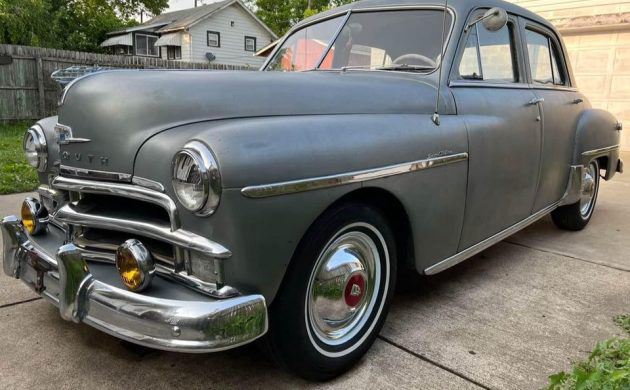
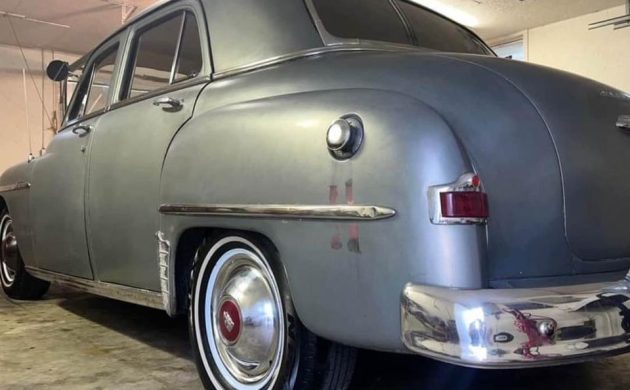
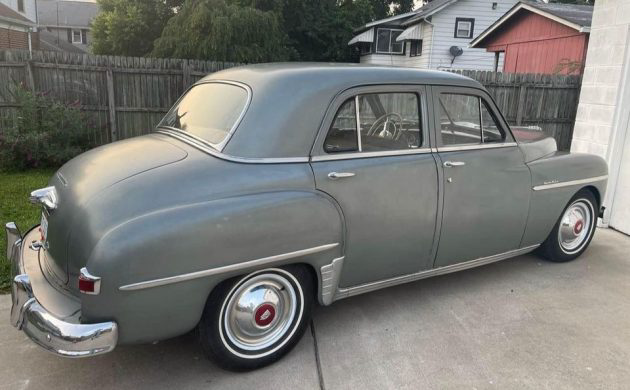
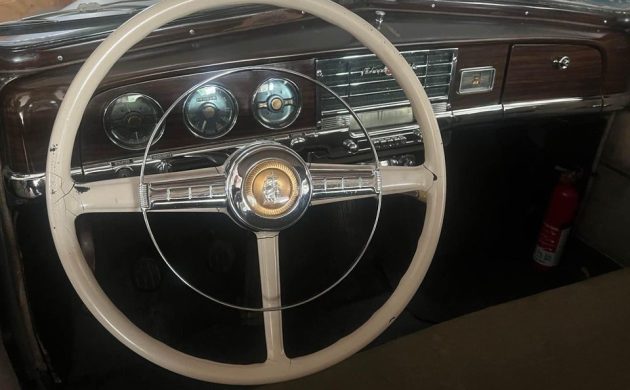
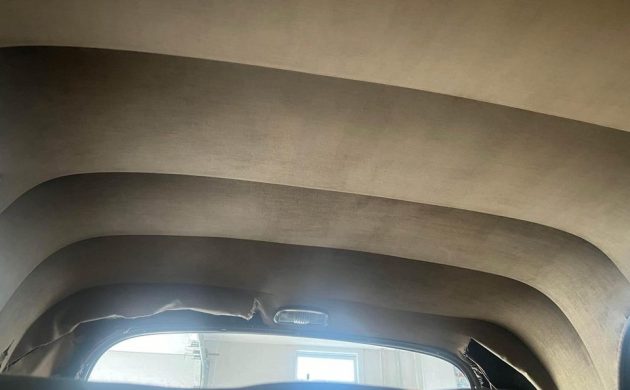



For you youngsters, you can thank K.T. Keller, then head of Chrysler. He insisted that all Chrysler Corp cars have ample head room for a man to be able to wear his hat. 😉 Didn’t know that, didja,Blanche? You can BETTE on it!
Hush! Hush! Sweet Carlot! 😅 🤣 😂
@ Rick W
You took my thunder! 😆 I was going to tell that little bit of history.
Always hated Kellers tall roof design and yes, these and all Mopars looked frumpy up to the 1957 forward look.
Once again GREAT minds drive similar LAND YACHTS! LOL! 👍 🎵 We seem 🎶to be 🎵 bosom buddies 🎶!
That was the mentality behind French cars with tall roofs, so Gendarmes could wear their tall hats.
Geez, ad does say OBO, so this seems like a deal. Speaking of Plymouths, the best pre-1970 daily driver I owned was an 8 year old 1968 Plymouth Surburban wagon with the 318, a guy gave it to me for painting his house. I tried to kill it, but it wouldn’t die!
That is a deal and a half price! I have a 51 Plymouth and the thing is built like a tank. I did a rebuild of the 218 ci engine with parts not only readily available but fairly priced. The only thing I would do to this car is find a Borg Warner overdrive transmission. They are a bit pricy but it will allow the car to run at highway speeds. These cars were designed for a 50 MPH speed limit and that is about how fast you would want to drive it for long periods. With the OD transmission you can run 70 MPH and not stress the drive train. The only concern with driving at those speeds is that the brakes were designed for stopping from 50.
Just give yourself plenty of room behind the guy in front of you…if that’s possible these days. People tend to shoehorn into any space between cars on the highway.
As the owner of a well presenting 1950 Dodge Coronet, I can say this is not an exaggeration….I could very easily daily drive my car (except I’m spoiled and like my air conditioning on these 95 degree days!) they truly are solid and built like tanks, but they offer such a unique styling that you’re sure to get attention wherever you go! Someone needs to snag this deal up and drive the wheels off of it!
This looks like a great old car, if it was more local to me I’d jump on it at $4500 or so. Its 1500 miles away from me so add $1500 to $2000 dollars to the price. I’d drive it until the engine gave up, if that ever happened, then replace it with a 340 or a 318 and auto trans. OD would be a good add on for this car, and fix as you drive anything else that needs attention. Wish it was in my area, it’s not a hot rod or muscle car but its cool and probably smells good inside like old cars do.
Listing is “no longer available” so I guess it’s sold.
I’ve been driving my 1952 Plymouth a fair bit lately. Where I live traffic can get very busy. Drum brakes means I have to keep a sharp look out and plan ahead. Sixty mph is about it for top speed. Me and the Plymouth are much happier on a rural two lane. The only way I would consider daily driving it is if I converted to front disc brakes and added BW overdrive. The listing has been removed. Someone got a good deal.
This ’50 Plymouth seems like a great buy to whoever purchased it!
I owned a slate blue ’52 Plymouth Cranbrook sedan back in the 70s. Yes, it was built and drove like a tank. It did have overdrive. It didn’t go fast but it did have enough torque for the front end to go up and the rear end to squat down when you floored it. Even had a Marilyn Monroe brody knob on the steering wheel. When it came time to re-do the valves, I did it myself with a friend and installed all new valve lifters. I installed them all the same way but come to find out later the intake lifters were supposed to go in upside down relative to the exhaust lifters. Damned if that flathead six didn’t run perfectly anway. I sold it for what I paid for it, $500 and turned around and bought a ’53 Buick Super 2-door hardtop for $800. The Plymouth was cool but the Buick was cooler.
My mom drove hers, when it was about 5 years old, from Warren, Ohio to the Grand Canyon, with two girlfriends, and back. She knew zilch about cars, and they made the trip, without a problem. I always thought about getting one, fixing it up, and surprising her. But she always said it looked like an “old man’s car,” and she had bought it out of neccesity. So I passed. Obviously, these were built like tanks, but they had the sex appeal of one, too.
My 100% Italian grandmother decided she wanted to learn to drive in her mid seventies. After she managed to get her license (they’ll give anyone a license) my uncle got her a 1950 Plymouth just like this one. He had painted it a sky blue. I remember seeing her trying to look over the steering wheel (she was barely 5 feet tall).
She only drove it for a short time, maybe a year before she stopped driving.
It was an ugly car then and an ugly car now.
@Jeff
Checkers were not only commercial vehicles. They did make “civilian” cars for the public. My father had a 1967 with 3 on the floor from the factory and a 1970 with automatic trans.
I have the Canadian Dodge version. Been in my wife’s family since new.
Just rolled over 90,000 miles. All original except the interior, mice got in.
Has a 25” 218, all Canadian Dodges had the longer block.
I agree the OD would be a nice upgrade.
For some unknown reason, Plymouth always seemed to have the unmitigated distinction, as the cheapest beater you could have. Heck, even makes like Studebaker and Hudson had more respect. Plymouths of this era always seemed to be a young couple, just starting out, had an old Plymouth or Dodge. My parents were married in 1948, and an “old Dodge” or Plymouth was their 1st car. The base price was about $1359, and devalued quickly. In a couple years, they were merely $50 beaters, with that new Chevy coming out( 1955) and very few kept the old Plymouth. A shame, look at that dash, our Packard wasn’t much nicer, and war proven mechanicals, many lasted into the 60s, still as $50 beaters. Nice find, except again, an automatic is the way of the future for any of these classics.
One of my wife’s co workers daily drove one of these in the early ’80s.
His was a 4-door sedan painted in that bottle green paint that all the auto makers were using back then.
His car was very clean and had little
to no rust. His name was Kenny Lancaster and he was still driving that
car long after my wife left the company in 1985. He was easy to spot
in traffic as his tag read YR 50. And
yes Howard, I too recall when ’40s and ’50s Chrysler products were $50
besters. My Mom bought a ’50 Saratoga for that price in ’61 or ’62.
It was damn near cherry and everything worked including the radio!
Guess that’s how I got interested in the music business as Mom would play us a steady diet of country during the day and doio eop at night.
Mom sold it after it got T boned in a
the a traffic accident. Other than a
wrinkled door skin, the Chrysler was
fine. But the ’58 Ford that smacked us was totalled. Scared the be Jesus
out of Mom so she traded it for a ’54
Chevy 210 4-door with a 235/3-speed
tranny. Sure wish I had ’em both now.
The good ones sure go fast, don’t they?
Daily Driver from before 1970? Easy. I’ll take a ‘67-‘69 full-size Ford. FE or Windsor V8, Cruise-o-Matic and factory AC if possible. Still a good looking and nice driving and riding car.
My doctor had a 1949 version of this car which he restored in burgundy color. He had about 5 vintage cars but this is the Plymouth is the one he drove to his office the most. I thought it unusual that he had this because it was a 4 dr and he owned a 1950 Hudson coupe that he turned into a street rod.
Around 1970, my father bought this exact car from a one owner, 92 year old man (born in 1878). He probably paid a hundred dollars and it was just for getting him a few miles to work and back.
It had vacuum operated wipers and no turn signals. As I recall dad had to install a kit so he wouldn’t have to stick his arm out in the winter.
Interesting discussion. I like this car’s bulbous good looks, but would prefer a coup. I wonder though, is that woodgrain painted on the dash? That’s quite a trick.
Yes, it is paint! 37 Plymouth business coupe that I worked on a few times has it.
The wood grain is applied as a coating and takes special skills to complete. There used to be some folks who could replicate this faux finish. My guess is that they are few and far between now. I remember seeing a guy demonstrating this technique at the fall Hershey meet about thirty years ago.
My best friend Jim’s older brother had this exact car when we were kids back in the 60’s. I told Jim I thought it was the ugliest car I ever laid eyes on! He said “yeah but it sure does run good” That it did. I loved riding in the thing because we could almost stand up in the back seat. He bought a 60 Impala 2 door and put the Plymouth behind the house where it sat for years. The low slung Impala wasn’t near as fun to ride in…..
before 1970 to be a reliable, no-fail daily driver, which car would you pick and why? I’ll get to that.
First car I remember riding in was a 53 Plymouth that pops traded in a 56 Desoto with a hemi but…I’ve had some Mopars in the past.
Wife of the 70s wanted a Volvo. I’ve had a Volvo Amazon ever since she got her first one. I drove the Amazon Estate yesterday in the heat here with the tailgate open. I’ve been alternating between neglect and abuse for 35 years since I got it and did a few mods and upgrades.
I bought one of these several years ago. I had admired it for years. I finally talked the owner into selling it to me. I loved it for a couple of hours and then couldn’t wait to sell it.
@BobMck
Why is that? Elaborate, please
I was driving classic Cadillacs at the time. This did not compare. I hated driving it. It felt like a POS in comparison. But back then, there was a huge difference, unlike today.
@ BobMck
You’re right about that. Back then you tell the difference, see the difference, FEEL the difference between any car and a Cadillac. Now, Cadillac and Buick are nothing more than a rebadged Chevrolet.
There’s nothing wrong with a Chevrolet, they aren’t Cadillac material.